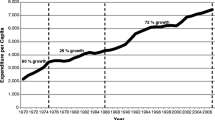Summary
In the early years of the next century, the Japanese population may well become the oldest in the world. The Japanese government’s concentration on post-World War II economic expansion meant that the government only fully woke up to the financial implications of having a large elderly population when oil prices were raised in the 1970s, highlighting Japan’s economic dependence on global markets.
This article explains the process by which policy regarding Japan’s elderly developed both before and after these oil price increases. The measures of healthcare cost containment that the government introduced in response to the increased financial pressure are described, with a particular focus on pharmaceuticals.
This article shows that the government has achieved a degree of success in terms of containing pharmaceutical costs, but that future effects on the quality of healthcare are uncertain. Ultimately, a wider application of a per diem fee in place of the prevalent fee-for-service system, and the realisation of plans to improve the social service infrastructure, would be the best path for policy to follow.
Similar content being viewed by others
Author information
Authors and Affiliations
Rights and permissions
About this article
Cite this article
Oliver, A.J., Ikegami, N. & Ikeda, S. Japan’s Aging Population. Pharmacoeconomics 11, 306–318 (1997). https://doi.org/10.2165/00019053-199711040-00002
Published:
Issue Date:
DOI: https://doi.org/10.2165/00019053-199711040-00002




